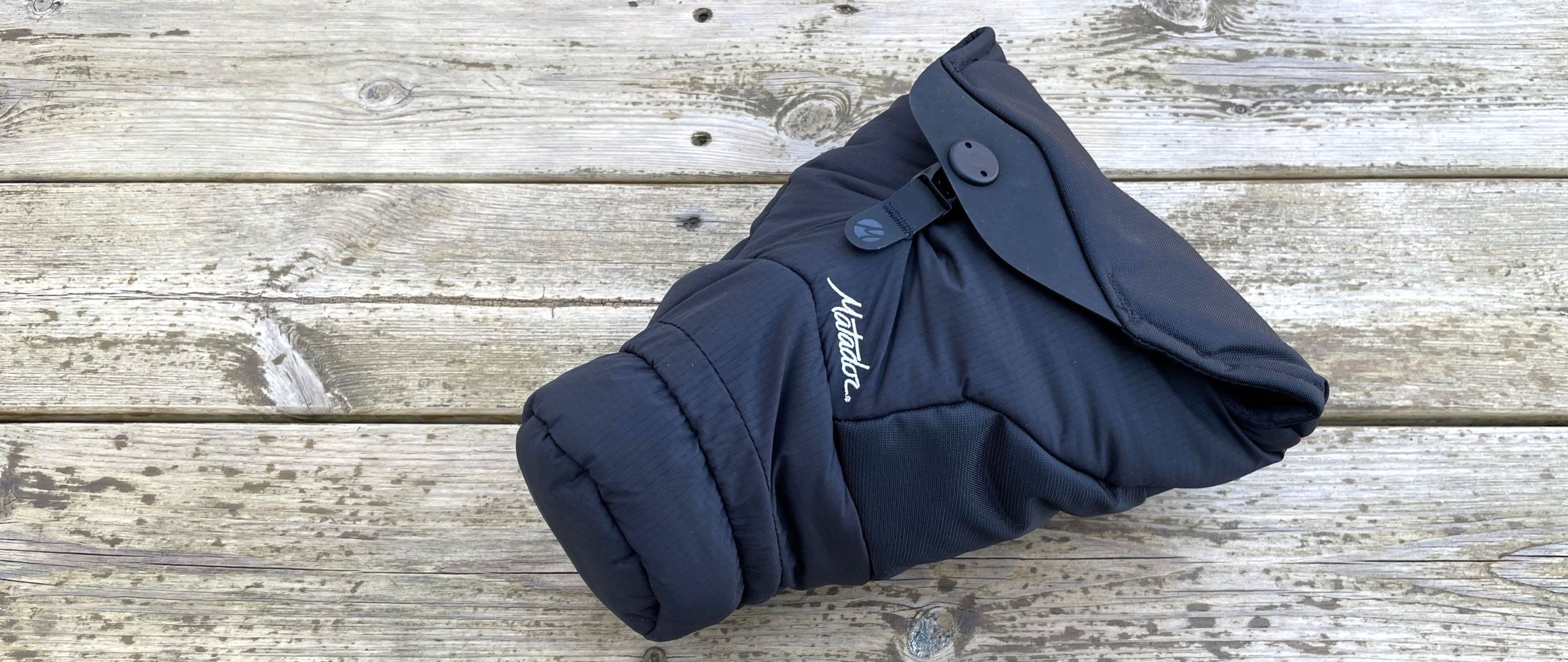Digital Camera World Verdict
Perfect for anyone after some weatherproofing for a compact DSLR or mirrorless camera, Matador’s clever Camera Base Layer is well constructed and offers plenty of options. It’s not going to help in high-impact scenarios – only bad weather – and it won’t fit full-frame DSLRs or telephoto lenses. Capable of adjusting to various smaller lens sizes and with an effective waterproof mode, the lightweight Camera Base Layer will appeal mostly to travel and outdoor photographers looking to cut down on gear without having to sacrifice on weather-proofing.
Pros
- +
Compact and lightweight
- +
Snug-fitting
- +
Integrated dry-bag
- +
Easy to pack for long trips
Cons
- -
Basic protection only
- -
Doesn’t fit full-frame DSLRs
- -
Won’t fit long telephoto lenses
- -
Can’t hold many accessories
Why you can trust Digital Camera World
Does your camera need a waterproof shell? So often made from tough and unwieldy ballistic nylon, holster-style camera cases can often be clumsy and difficult to pack for a long trip. Cue this versatile and highly packable protective sleeve from ultralight adventure travel gear brand Matador.
While mostly focused on collapsible backpacks, pocket blankets and keychain towels, Matador has here produced a second iteration of its super-lightweight Camera Base Layer that’s designed to protect a camera from weather without adding to your load.
Lightweight and highly packable, it’s the kind of accessory you can happily throw into a case when going on a trip without too much debate. Which isn’t something you can say for most camera holsters.
Key features
The Camera Base Layer’s cleverest feature by far is its built-in waterproof cover. In dry weather it can lie dormant in the very depths of the case – it’s so small you’ll never notice it – but should there be a downpour it’s a cinch to drag it upwards. Cue ‘waterproof mode’, whereby your camera is enveloped in a double-waterproof layer that’s sized to cover your camera’s body.
It’s also able to adapt its size according to what lens is being used. While wearing a prime lens it can stay as a diminutive camera – and with plenty of protective padding at the bottom – but unleash the drawstring and it bulges to fit around longer lenses, albeit with less padding.
Quality and usability
Weighing 155g/5.5oz and measuring 28x22.9x2cm/11x9x0.8 inches when empty, the Camera Base Layer is designed for compact DSLR and mirrorless cameras. So if you’ve got a full-frame DSLR – or a telephoto lens, for that matter – this holster isn’t going to work for you.
It has the feeling of a light outdoor jacket made for the trails. Its 40D soft-shell exterior is waterproofed, with 420D nylon panels positioned in hard-wearing areas around the top and back.
The best camera deals, reviews, product advice, and unmissable photography news, direct to your inbox!
Inside is 50D ripstop drybag liner to keep your camera from getting scratched with just enough padding to help prevent damaging knocks.
There’s a rolltop-style lid to the Camera Base Layer that uses a magnetic Fidlock latch, though it’s not possible to adjust its tightness. That’s handled further down by a drawstring that helps customise it to suit whatever length of lens your camera is wearing. There’s also a built-in waterproof cover that extends upwards. On the back is a reasonable quality carabiner to attach to a belt or bag, as well as a small accessory pocket.
In use, the Camera Base Layer offers just enough peace of mind that the camera inside is being protected from bumps and scratches, though it’s mostly about weather-proofing.
We adored its built-in waterproof cover. It works well in use and we never felt our camera was in danger during rainstorms. There are even a couple of clasps for securing your camera’s neck strap, which help make the whole thing watertight.
However, we did slightly miss having a dedicated shoulder strap with padding, which most holster-style cases include. Matador is presuming you’ll use your camera’s neck strap and then when using your camera just clip the empty Camera Base Layer to your clothes/jacket/backpack. For ultralight travellers that all makes perfect sense, but it would be nice to have the option to attach a shoulder strap.
Although this is not a case for anyone wanting to travel with a tripod or any significant stash of accessories, it is possible to shove a lens cover, some memory cards, a spare battery or a cleaning cloth (all essential for outdoor photography!) into the rear’s small zipped pocket. In fact, it’s just about possible to squeeze in all of those things.
Verdict
Perfect for anyone after some weatherproofing for a compact DSLR or mirrorless camera, Matador’s clever Camera Base Layer is well constructed and offers plenty of options. It’s not going to help in high-impact scenarios – only bad weather – and it won’t fit full-frame DSLRs or telephoto lenses. Capable of adjusting to various smaller lens sizes and with an effective waterproof mode, the lightweight Camera Base Layer will appeal mostly to travel and outdoor photographers looking to cut down on gear without having to sacrifice on weather-proofing.
Read more:
• Best camera bag
• Best holster bag
• Best sling bag
• Best rain covers

Jamie has been writing about photography, astronomy, astro-tourism and astrophotography for over 15 years, producing content for Forbes, Space.com, Live Science, Techradar, T3, BBC Wildlife, Science Focus, Sky & Telescope, BBC Sky At Night, South China Morning Post, The Guardian, The Telegraph and Travel+Leisure.
As the editor for When Is The Next Eclipse, he has a wealth of experience, expertise and enthusiasm for astrophotography, from capturing the moon and meteor showers to solar and lunar eclipses.
He also brings a great deal of knowledge on action cameras, 360 cameras, AI cameras, camera backpacks, telescopes, gimbals, tripods and all manner of photography equipment.




